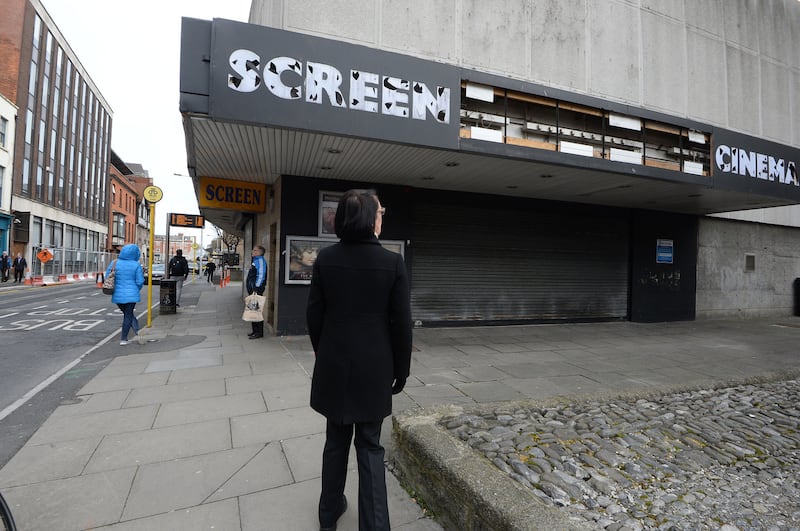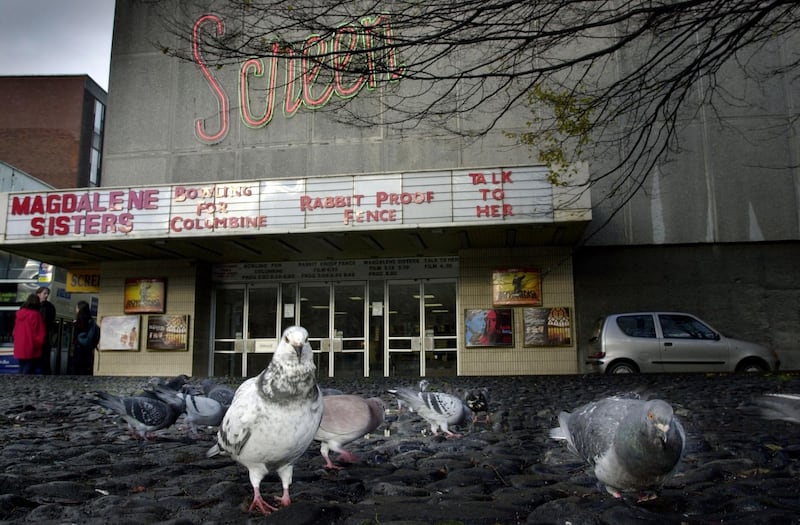You can date a Dubliner by what comes into their head when you mention the building that sits on the eastern corner of Townsend Street and Hawkins Street.
If that person calls it The Regal then they are a distinguished greybeard. The building ceased to operate as a cinema between 1962 and 1972, when it briefly traded as the New Metropole.
People of my generation think of it initially as just the Metropole: a first-run cinema that, from 1973, offered lazy Trinity students the option of seeing (in my case) The Big Chill without walking all the way to The Savoy.
Slightly younger folk never think of it as anything other than the Screen.
The original Light House on Middle Abbey Street . . . the fag smoke was thick. The seats did not recline. Nachos were not available
To me that is still its "new" name. The Screen is a "new" thing, like the Dart, the Molly Malone statue and Sackville Street.
Opening in 1984, that incarnation welcomed foreign-language films, American independents and future cult phenomena to a satisfactory, if somewhat lumpy, old-school cinema space.
People coming to consciousness in the last year of the current decade think of the site as a big hole in the ground. We write – within view of The Irish Times building – as the last few girders are hauled off to make way for the EnormoCorp Business and Leisure Complex (or whatever it’s called).
There is talk of a “500-seater venue” within the development.
Will you get to see Jean de Florette on a screen set at a slight angle to the horizontal while eating Opal Fruits from a bag? No, you won’t.
Will you wonder about that man wheezing his way through Betty Blue? No chance.
Vanished treasures
Allow us to do a bit of what Stephen Fry describes as "pining for the milkman's cheery whistle".
There’s always space for just a little moaning about vanished cultural treasures.
Nobody would argue that the Screen (as the young people call it) was the loveliest cinema on earth.
It was rudimentary to begin with and it became shabbier as the years progressed before receiving a satisfactory tidying up in its last years.
The morons didn't have mobile phones, but the morons did offer running commentaries to other morons during the picture
In the Screen’s high period it was showing pretty much what you’d expect a gently alternative cinema to screen.
I remember seeing Akira Kurosawa’s Ran there in 1986 before retiring for a pint of Dublin’s most popular stout in the nearly adjacent Mulligan’s.
The sound wasn’t quite what the Japanese director would have desired. The screen could have been larger. But the evening was everything I then wanted from life. I hear a banjo.
“Raised on songs and stories, heroes of renown/The passing tales and glories that once was Dublin town . . .”
Where was I?

The final gutting of the Screen really does mark the end of an era for theatrical exhibition. It may or may not be an era you miss. But it was something.
The lucky cineastes of 21st century Ireland can enjoy cultural cinema in such venues as the Irish Film Institute and the Light House in Dublin, Pálás in Galway, the Triskel in Cork and Queen's Film Theatre in Belfast (apologies if I've left you out).
Access Cinema continues to tour those films to the regions. The newish venues offer nicer seats, better screens, tastier treats and auditoriums that rarely require the wearing of mufflers. Good for them.
Adventurous punters can access foreign classics on the better streaming sites (though Netflix offers little in that area). Terrible, terrible criminals can access even more from piracy sites. Bad luck to that last crowd.
Sewer full of character
What’s finally vanished is the grubby, wholefood art cinema that flourished during the boom for world cinema in the 1960s.
It was in such venues that punters connected with the films of Ingmar Bergman, Rainer Werner Fassbinder and Werner Herzog.
Before everything became like everything else, an adventurous entrepreneur could acquire such a venue cheaply, buy a few boxes of crisps, rent a print of Alice in the Cities and make themselves a pocket impresario.
The original Light House on Middle Abbey Street was such a place. The fag smoke was thick. The seats did not recline. Nachos were not available. Every city of any size had one.

London had many. They weren’t always fragrant, but they had character. Despite being owned by the nation’s biggest cinema chain, the Screen must be numbered among that dog-eared set.
Let us not get carried away.
Don’t believe everything old gits tell you about cinema-going in times of yore – particularly if they say “of yore”. The morons didn’t have mobile phones, but the morons did offer running commentaries to other morons during the picture.
In the days of continuous screening, patrons thought nothing of arriving halfway through and leaving when the succeeding show reached the same point. That’s how I saw I first saw 101 Dalmatians.
They used to ban anything with a bosom here.
The world is now a sewer. It was probably an even bigger sewer then. But it did have character.













